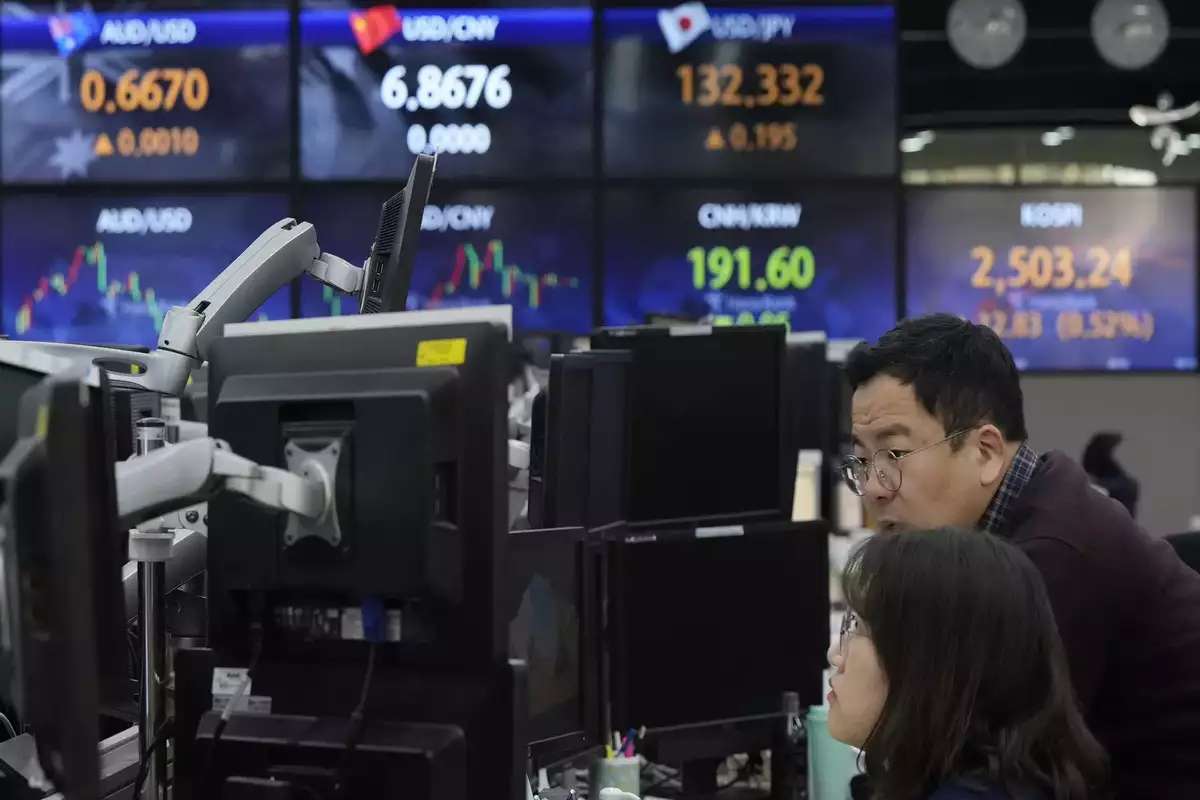Global Markets React to New Tariffs
Asian Markets Plunge suffered sharp declines on Monday following the U.S. government’s decision to impose tariffs on Canada, Mexico, and China. The move, which has intensified fears of a full-blown trade conflict, led investors to reassess potential risks to global economic stability.
Both Canada and Mexico have announced retaliatory measures, while China has vowed to introduce “corresponding countermeasures” and challenge the tariffs through the World Trade Organization (WTO). The U.S. administration has defended the decision, citing concerns over illegal immigration and drug trafficking as justification for the trade restrictions.
The impact on financial markets was immediate. Hong Kong’s Hang Seng Index dropped by 0.7%, Japan’s Nikkei 225 plummeted by 2.8%, South Korea’s Kospi fell 3%, and Australia’s ASX 200 declined by 1.9%. Markets in mainland China remained closed due to the Lunar New Year holiday. Meanwhile, the U.S. dollar surged against the Chinese yuan, reaching a record high, while the Canadian dollar slumped to its lowest level in over two decades.
Investor Concerns Over Prolonged Trade Disputes
The recent tariff announcements have heightened concerns among investors, who fear the potential consequences of a prolonged trade dispute between the world’s largest economies. Analysts have warned that a sustained conflict could severely impact corporate earnings and economic growth.
Tim Waterer, chief market analyst at financial services firm KCM Trade, emphasized the risks, stating, “The prospect of a prolonged trade battle between the U.S. and its major trading partners is prompting investors to reduce their risk exposure.” He also noted that there is growing uncertainty over which nations might be targeted next.
The latest Asian Markets Plunge tariffs affect the three largest U.S. trading partners, with potential implications for other economies as well. The U.S. administration has hinted that tariffs on the European Union could be implemented soon, adding to market instability.
Investment strategist Charu Chanana from Saxo Bank pointed out that while tariffs might yield short-term benefits for the U.S. economy, they pose long-term risks. “Frequent use of tariffs could push other nations to decrease their economic reliance on the U.S., thereby weakening the global role of the dollar,” she explained.
Potential Ramifications and Next Steps
As the trade dispute escalates, global leaders are closely monitoring developments. The U.S. president has announced plans to speak with Canadian and Mexican leaders regarding the new tariffs, which are set to take effect at midnight on Tuesday. Canada and Mexico are facing 25% tariffs on their exports to the U.S., while Chinese goods will be subjected to an additional 10% levy.
With tensions running high, market analysts are bracing for further disruptions. The Asian Markets Plunge uncertainty surrounding potential new trade restrictions continues to cast a shadow over global markets, leaving investors wary of heightened volatility in the weeks to come. Many are now watching to see how affected nations will respond and whether diplomatic efforts can mitigate the economic fallout of this growing trade confrontation.











